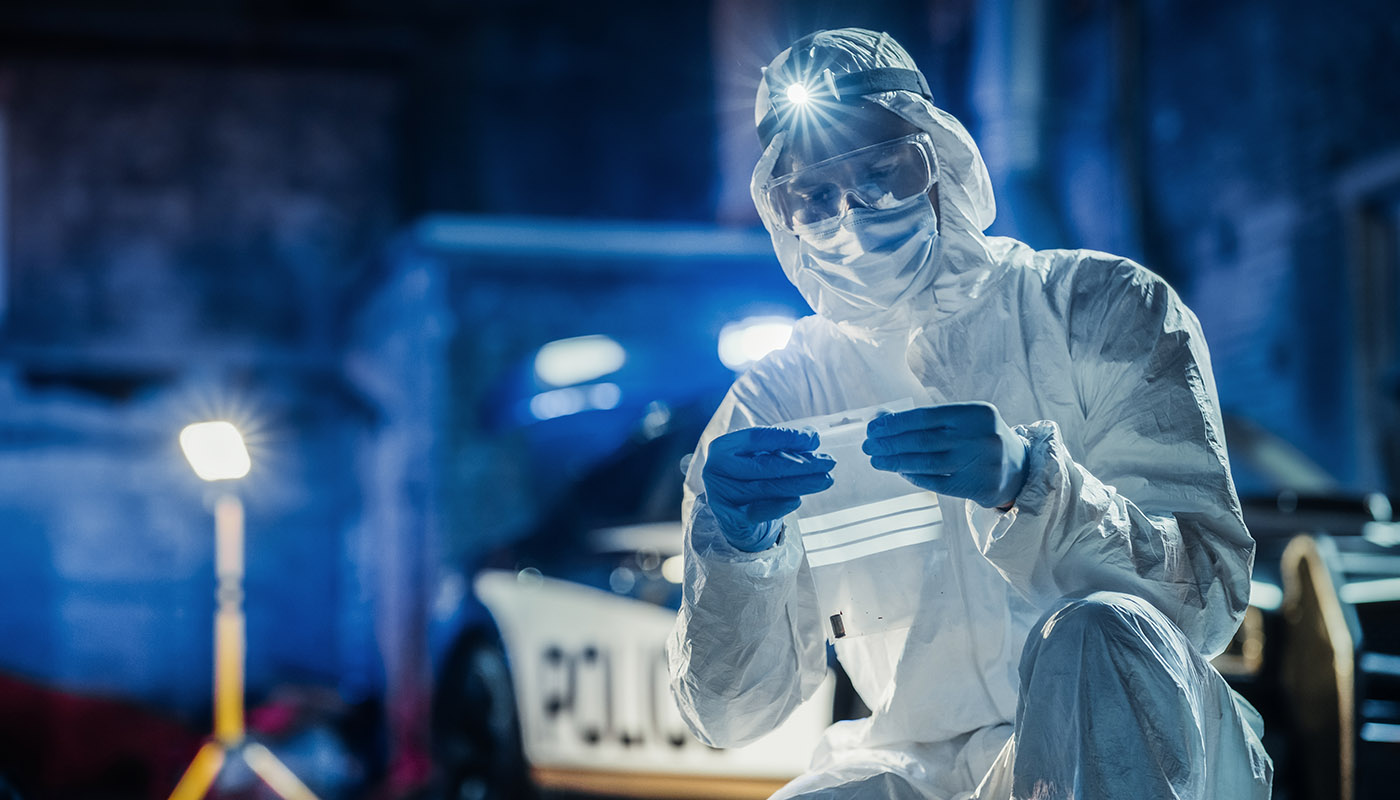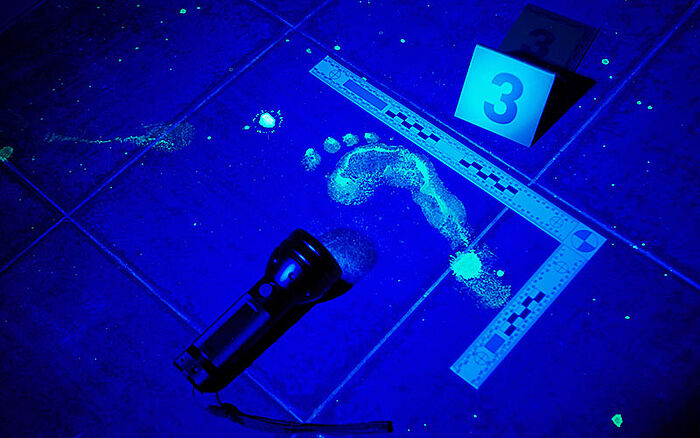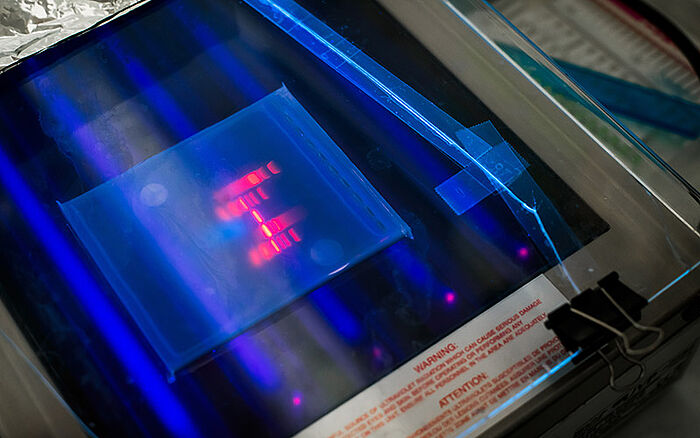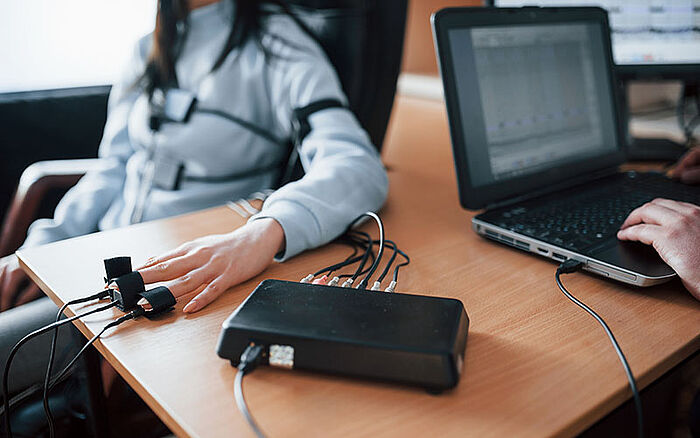
Intangible witness - the Intellectual Property of forensics
They are the stories that obsess, thrill and intrigue us, but tales of crime become far more disconcerting if justice is not served at the end. Without modern forensic tools and techniques, the work of maintaining law and order would be considerably more arduous and worryingly less successful. Thankfully, an arsenal of Intellectual Property (IP) rights is available to protect these technologies protecting the public.
In a court of law, the most reliable testimony is measurable, unequivocal and indisputable, and so forensic science seeks out the hard facts that speak to the truth amid human chaos. Today, we place a selection of crime-solving technologies and their patents under the microscope.
A guiding light in the darkest of places
When an offender is caught red-handed, the result is an open-and-shut case; but police frequently have to dig much deeper to reveal the stain of guilt. A simple but effective field test for blood can be all the difference, and that test is often a luminol spray.
Known to the scientific community for at least a century, dissolved luminol reacts with an oxidizer, typically hydrogen peroxide, to produce a bright blue-green glow in a process referred to as chemiluminescence. German chemist H. O. Albrecht discovered in 1928 that blood could act as a catalyst for this reaction, increasing the brightness of the light emitted. In turn, this discovery inspired his countryman Walter Specht to describe its application as a presumptive test for blood at a crime scene in 1937.

A positive luminol test will glow for about 30 seconds and can be repeated if needed. Thus by observing the speed of the reaction, an experienced criminologist will be able to distinguish a result triggered by blood from that involving another substance.
To carry out such a procedure, a luminol solution is mixed with oxidizer and sprayed over a surface where an investigator suspects blood may be present. In a darkened scene, possible results immediately luminesce. An advantage of this approach is that a wide area can be tested very quickly without destroying any DNA evidence. Additionally, luminol is able to highlight invisible traces of blood that remain after cleaning or that have seeped into floorboards or carpeting – even after years have passed. In fact, as Specht noted, "the luminous effect is much stronger when exposed to dried blood."
Despite its well-documented history, or rather because of it, relatively few historical patents exist for the blood-detection chemical. Nevertheless, the need to innovate upon existing methods is especially pressing in law enforcement, and modern improvements are still being registered for IP rights almost a hundred years after luminol's forensic potential was first described.
However, the technique is not without its limitations: Since it is the iron present in hemoglobin that catalyzes the reaction, other substances are liable to produce a false positive, notably bleach. Also, as a presumptive test, luminol cannot distinguish between human and animal fluids, meaning further analysis is needed to confirm the presence of blood and its origin. But thanks to the next innovation, only the tiniest amount of blood needs to be recovered to identify an individual.
Irrefutable proof from the faintest glimmer
Forensic DNA fingerprinting was first used in a criminal case in 1986, but in those early days, a relatively large amount of biological material was needed to deliver an accurate result. On top of that, the procedure would destroy the sample, precluding additional testing. In some cases, detectives could not take that risk.
What was needed was a way to amplify a small quantity of viable DNA until it could be reliably used as evidence. And the answer might already be familiar: PCR. Short for "polymerase chain reaction," the technique is widely used in COVID-19 testing today but cut its scientific teeth in forensic laboratories around the world.

At 9:05 am on September 10, 1984, English researcher Alec Jeffreys had his "eureka" moment. Struggling with the complex genetic variables between close relatives, his first reaction was frustration. And then "the penny dropped," and he realized he had chanced upon genetic fingerprinting.
In 1985, American biochemist Kary Mullis invented the PCR technique while working at Cetus Corporation. Using his method, a select strand of DNA is split in two (imagine a zipper being undone) at a temperature of 90–94 °C. The sample is then cooled, and "primers" are bonded to the opened "teeth" of the unzipped DNA. In the final step, the sample is reheated slightly, and new nucleotides are attached to the "teeth" by a type of enzyme called a polymerase. The outcome is two identical DNA strands where there was previously only one. This process of unzipping and cloning can be repeated over and over to create millions of duplicates.
However, this was initially a prolonged and costly procedure since the polymerase was destroyed by the high temperatures involved. Replenishing the enzyme after every copying cycle meant results could take weeks. Thankfully, a more stable polymerase derived from the Thermus aquaticus bacterium removed this limitation in 1988. "Taq," as it is known, and the improved PCR technique later became the subject of an inflamed patent dispute that spanned continents.
Swiss healthcare giant Hoffman-La Roche Ltd., which had bought Cetus Corporation, sued the Promega Corporation in 1992, asserting three patents related to PCR (US4889818A, US4683195A and US4683202A). La Roche alleged the Wisconsin-based biotechnology company was misusing a Taq-related licensing agreement with Cetus. Reciprocal lawsuits were soon traded, with the quarrel spilling over from the U.S. courts to the European Patent Office (EPO). Finally, an undisclosed "global settlement" in 2005 and some revisions to US4889818A buried the hatchet between the feuding forensics without either appearing to walk away bloodied.
Meanwhile, Mullis, "perhaps the weirdest human ever to win the Nobel Prize for chemistry," went on to explore another abbreviation, LSD, in his eccentrically titled book, "Dancing Naked in the Mind Field."
Sweating it out in the hot seat
Despite all the technological innovations of recent decades, these advanced methodologies still need hard-nosed detective work to see them through. And backing up many law enforcement agencies is the venerable, if oft-misunderstood, lie detector.
Otherwise known as a polygraph, this device was invented by Swedish-Canadian John Augustus Larson in the early 1920s. Working as a police officer in Berkley, California, Larson struck upon the idea of measuring a subject's blood pressure during interrogations to suggest whether they were being truthful. His prototype "cardio-pneumo psychograms" were essentially modified sphygmomanometers (blood pressure monitors) but were sufficient to capture the attention of Leonarde Keeler, who quickly became his co-inventor.
By 1925, the two men had improved upon the original design to produce the "Emotograph," with Keeler applying for a patent. Six years later, the first patent relating to a modern lie detector was granted.

To produce useful readings, a polygraph test must first establish a baseline by observing a subject's responses to basic yes or no questions. Modern versions of the device can include sensors to detect whether someone is attempting to skew the results by clenching their jaw - or rear end.
What set the Emotograph apart was its ability to record simultaneous inputs on chart paper, hence the later term: "polygraph." In time, more information than blood pressure and breathing cycle would be captured, including galvanic skin response (GSR). Not to be confused with gunshot residue, another type of GSR that may be encountered at a crime scene, this phenomenon describes the electrical conductivity of the skin. When a person sweats, such as when asked an anxiety-inducing question, the liquid and salts released aid the flow of electricity. In turn, this change in resistance can be easily detected by a sensor placed on the subject's fingertip. Yet, despite what some unconventional computer input devices from the 90s might have suggested, the GSR does not transmit thoughts.
And herein lies the heart of the polygraph's controversy: it cannot definitively prove a person is being dishonest, only whether they are stressed. At best, a lie detector test can only infer deception by way of elevated emotion, and so their findings are inadmissible as evidence in many courtrooms. Nonetheless, their use is still surprisingly widespread. In the United States, for example, a ruling by the Supreme Court in 1998 left the matter to individual states to decide. And to this day, anyone wishing to join the FBI or other federal law enforcement and intelligence agencies must pass a polygraph test.
A glimpse into the world of forensics from a safe distance tantalizes the imagination and touches upon a powerful instinct toward discovery. Our emotional drive to explore, innovate and protect forms the core of the inventive process. But as any veteran detective knows, a good partner is worth their weight in gold. So, when your IP assets are at stake, make sure the patent experts at Dennemeyer are the first on the scene.
Filed in

Exploring an alternate 2025 where patents are made weaker by design to encourage sustainable innovation.



